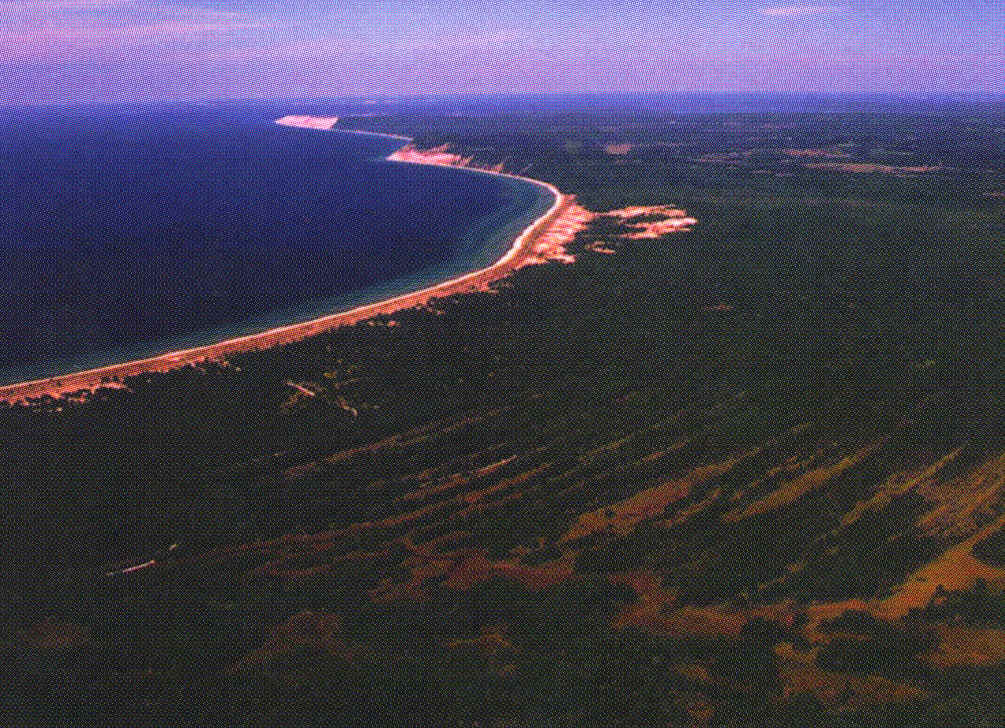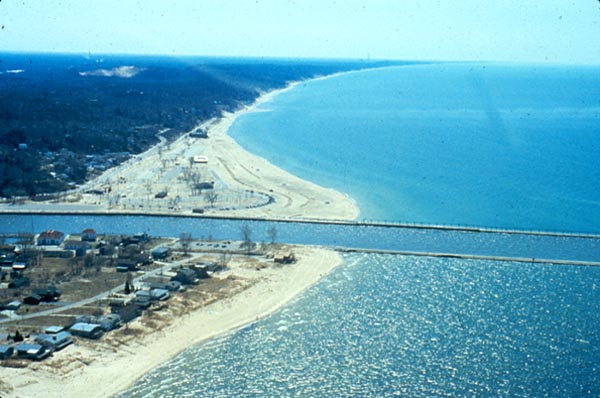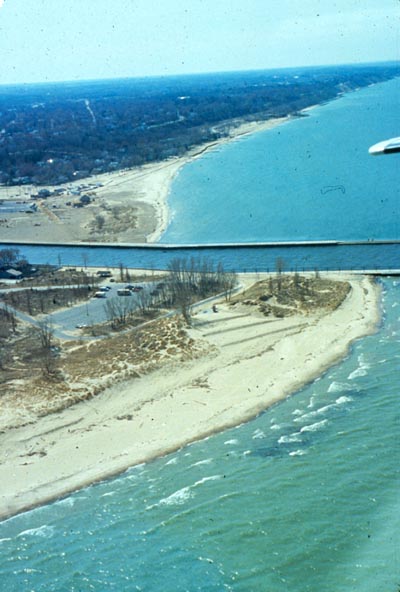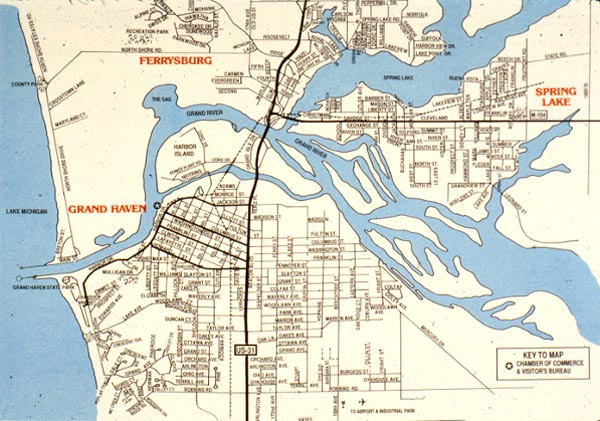Wide, sandy beaches like this one are often taken for granted by residents of the Great Lakes. And yet, at certain times, our beaches erode at rates of a foot per year or more.
One of the first reactions by local landowners to an eroding beach is to build a seawall, like this one. Seawalls are a form of "hard stabilization" designed to stop erosion. What they do, in fact, is slow or stop the erosion of the land behind the wall, but accelerate the erosion of the sandy beach proper. In some instances this is an acceptable outcome; here the wall was built to protect a pump station immediately to the left (not visible in this image), which pumps water out of the lake for local residents to use. The loss of the beach, in this case, was acceptable and is occurring, while the destruction of the pump station was not an option; the sea wall has done its job.
Source: Photograph by Randy Schaetzl, Professor of Geography - Michigan State University
This sea wall, along the Atlantic coast, illustrates the end fate of all sea wall-fortified coasts --- a loss of the sandy, recreational beach. This site was once the home of the best beach in Massachusetts. The sea wall, built to protect the expensive homes that overlook it, has destroyed the beach.
Source: Photograph by Randy Schaetzl, Professor of Geography - Michigan State University
Most beach-owners know that hard stabilization(i.e., seawalls) eventually will destroy
their beach. Another option often taken is to trap sand that naturally would move along
the beach, and make it 'stop" in front of your property for a longer period of time
than it normally would.
Groins are engineered structures, walls or a series of posts, built
perpendicularly to the coast, to catch some of this sand moving in the waves and
currents---as longshore drift. Longshore drift occurs as sand is moved along the beach,
within the surf zone. It happens because waves approach the shore obliquely.
Source: Unknown
While sand does accumulate on the updrift side of the groins, the other side of the groin
becomes sand-starved and beach erosion occurs. Thus, one rarely sees a single groin.
Rather, groins are built in fields like this one.
Source: Photograph by Randy Schaetzl, Professor of Geography - Michigan State University
Groins, however, are only a band-aid, and do not address the real reasons why beaches
are eroding on the Great Lakes and elsewhere. One of the main reasons our beaches are
eroding is due to a lack of sand reaching the beach via natural systems. The two main
sources of sand to the beach system are erosion of bluffs, which
continues today at its normal pace, and contributions of sand by rivers entering
the lakes. Of these two, bluff erosion (seen below) contributes 90% of the
sand that we find today on our beaches. Bluff erosion is a necessary process!
It is not "bad".

Source: Unknown
This latter source of sand has been slowed by dams up river, and by the construction of jetties at the river mouths. This jetty, at the mouth of the Grand River at Grand Haven, is maintained by the US Army Corps of Engineers, and in so doing is dredged repeatedly. The dredging keeps the water deep for river traffic, but in so doing it forces the little sand that the river carries into deep (lake) water, where it is forever lost to the beach system. Just as sea walls destroy beaches, jetties starve beaches.

Source: Unknown
Jetties act like a set of parallel groins, and trap sand on the up drift side. This sand is not allowed to move around the jetty, because of the deep water offshore, and thus the sand is lost to the beach system (it is deposited in the deep parts of the lake). Thus, jetties, like this one at St. Joseph, Michigan, represent interruptions in the flow of sand along the coast, and are places where this sand is lost from the system.

Source: Unknown
Most of the major harbors on the Great Lakes have and maintain their jetties. This map shows the Grand Haven jetty, on the Grand River.

Another cause of beach erosion is high water levels in the Great Lakes proper. High lake levels allow waves to pound the beach farther inland, leading to greater amounts of erosion father up the beach front. The chart below shows that lake levels have fluctuated markedly over the past 130 years, on the order of 1-2 meters. At each high-water mark, extensive erosion is noted somewhere along the shoreline. If high water coincides with a strong storm with its large waves, erosion can be severe.
Over geologic time, we know that lake levels have fluctuated to even larger degrees. Two prominent high stands are the Nipissing Great Lakes about 5-4000 years ago, and the Algoma high stand, about 2500 years BP (before present). The reasons for these high stands have to do with fluctuations at lake outlets (Nipissing), and because of larger-than-normal amounts of water inputs to the system as rain and snow (climatically-driven, Algoma).
Source: Unknown
This chart shows that lake levels have fluctuated still more widely, on the order of tens of meters, over the past 10,000 years. Superimposed on this fluctuation is the small-scale ups and downs we see during a lifetime. It is important to keep these variations in perspective, whenever beach erosion on the lakes is being discussed.
Source: Unknown
This material has been compiled for educational use only, and may not be reproduced without permission. One copy may be printed for personal use. Please contact Randall Schaetzl (soils@msu.edu) for more information or permissions.